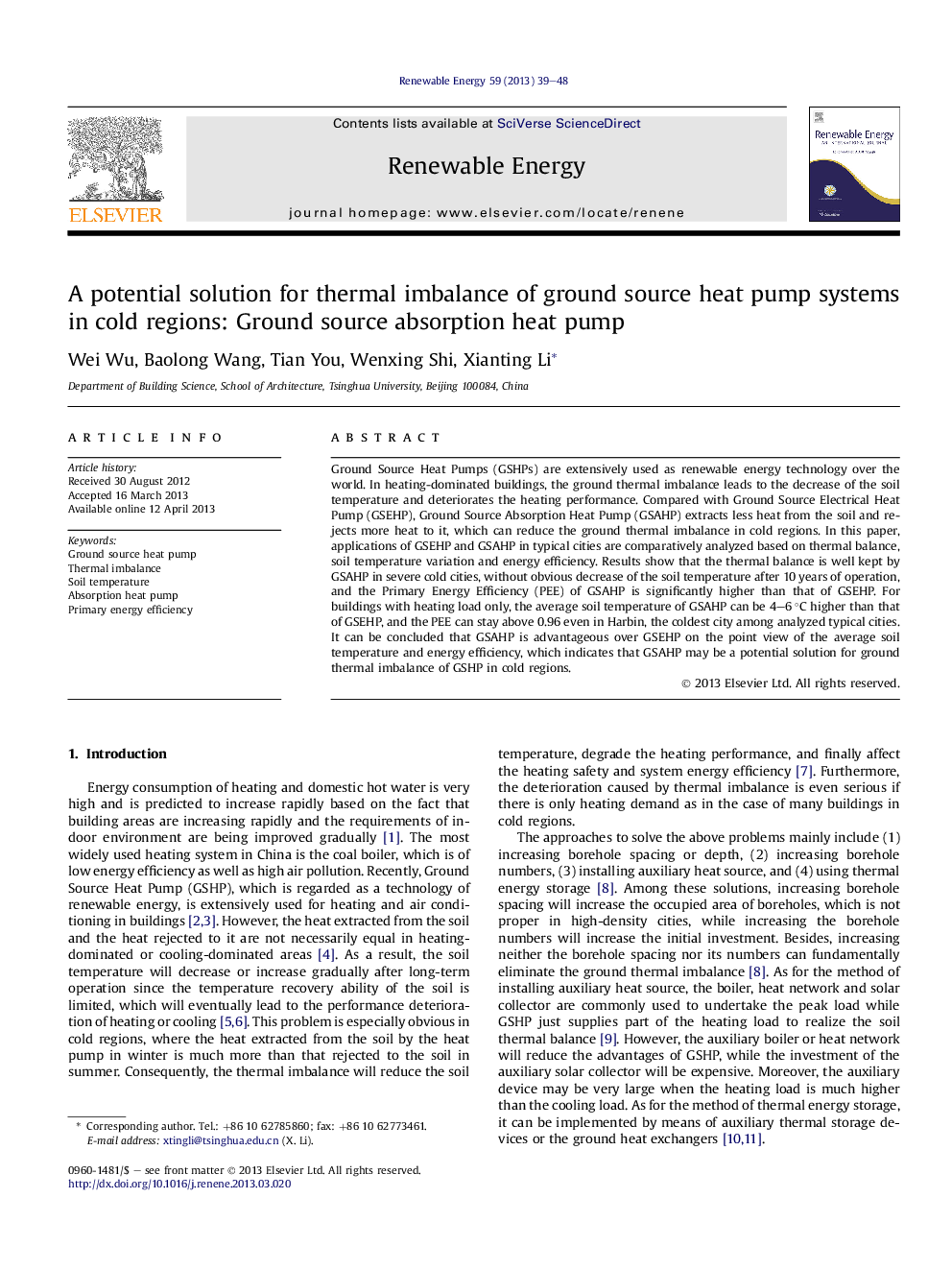| Article ID | Journal | Published Year | Pages | File Type |
|---|---|---|---|---|
| 6769101 | Renewable Energy | 2013 | 10 Pages |
Abstract
Ground Source Heat Pumps (GSHPs) are extensively used as renewable energy technology over the world. In heating-dominated buildings, the ground thermal imbalance leads to the decrease of the soil temperature and deteriorates the heating performance. Compared with Ground Source Electrical Heat Pump (GSEHP), Ground Source Absorption Heat Pump (GSAHP) extracts less heat from the soil and rejects more heat to it, which can reduce the ground thermal imbalance in cold regions. In this paper, applications of GSEHP and GSAHP in typical cities are comparatively analyzed based on thermal balance, soil temperature variation and energy efficiency. Results show that the thermal balance is well kept by GSAHP in severe cold cities, without obvious decrease of the soil temperature after 10 years of operation, and the Primary Energy Efficiency (PEE) of GSAHP is significantly higher than that of GSEHP. For buildings with heating load only, the average soil temperature of GSAHP can be 4-6 °C higher than that of GSEHP, and the PEE can stay above 0.96 even in Harbin, the coldest city among analyzed typical cities. It can be concluded that GSAHP is advantageous over GSEHP on the point view of the average soil temperature and energy efficiency, which indicates that GSAHP may be a potential solution for ground thermal imbalance of GSHP in cold regions.
Keywords
Related Topics
Physical Sciences and Engineering
Energy
Renewable Energy, Sustainability and the Environment
Authors
Wei Wu, Baolong Wang, Tian You, Wenxing Shi, Xianting Li,
